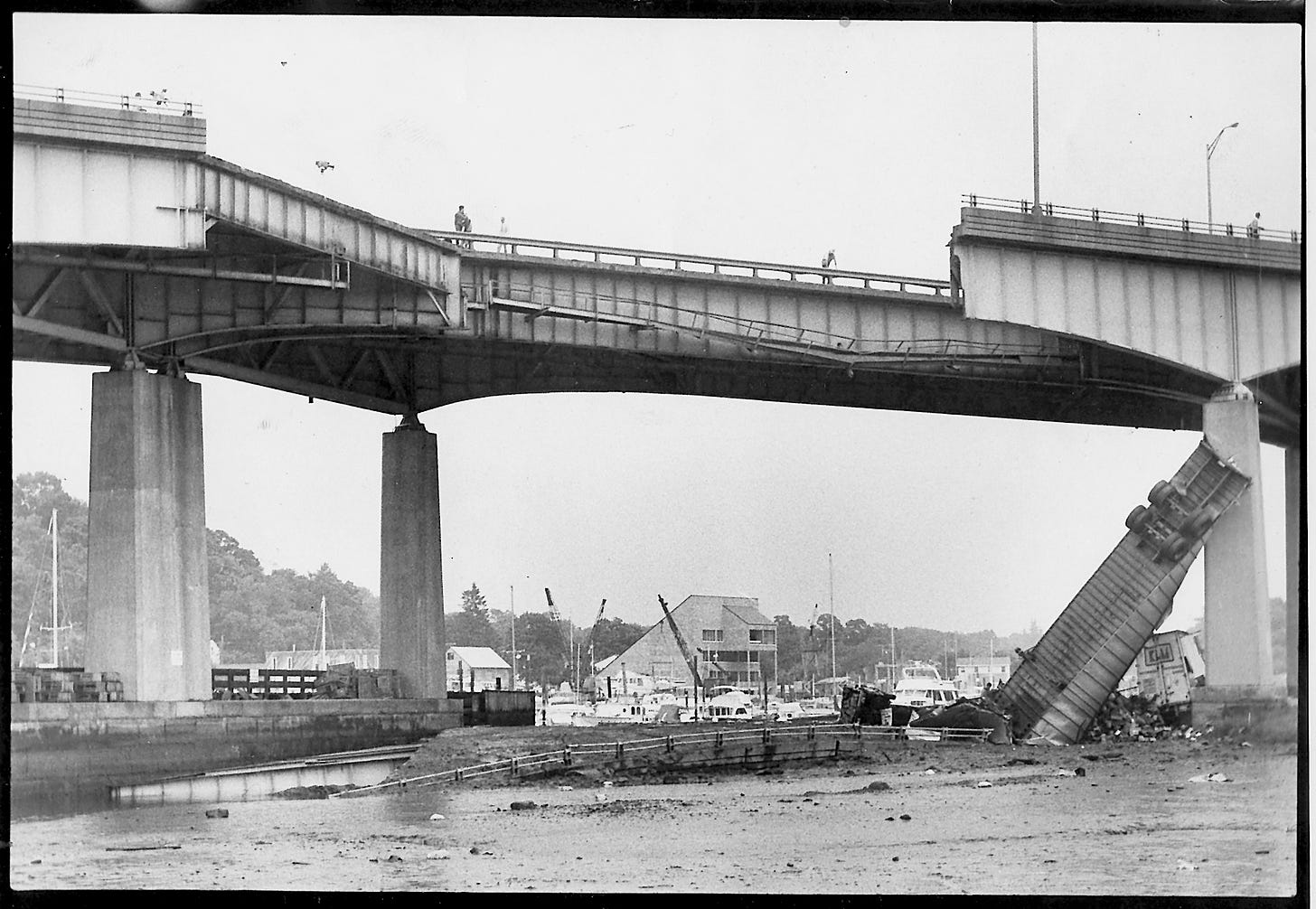Psst. There is no infrastructure crisis.
Our roads and bridges are fine. Our problem is not the public investment we have in the United States, but the public investment we don't have. What's eroding and collapsing is labor strength.
I have long bridled at political rhetoric about the “infrastructure crisis” and tend to agree with conservatives when they say it’s mostly made up. I don’t agree with every argument in Eli Lehrer’s fine essay on this subject last spring in National Affairs, but it’s a smart piece and deserves to be read. “The evidence of an American infrastructure crisis,” Lehrer wrote,
is mostly derived from a source with an obvious bias: the ‘report cards’ produced by the American Society of Civil Engineers. The ASCE is a trade association. Its most recent national report, written in 2017, grades the nation's infrastructure a D+ and calls for drastic action: ‘Deteriorating U.S. infrastructure is impeding our ability to compete,’ the engineers write. ‘[I]mprovements are necessary to ensure our country is built for the future.’
While these report cards are certainly honest on their own terms, one has to realize that they are produced by an organization chartered to ‘advance civil engineering.’ If the ASCE didn't continually find a need for spending more on civil engineering and creating more jobs for civil engineers, its members would leave. So, rather than accepting what trade organizations say, it makes the most sense to examine the actual performance of American infrastructure. By these measures, America scores pretty well, both by absolute standards and in comparison to other countries.
After Lehrer wrote this, ASCE raised the country’s infrastructure grade from D+ to C+, which was off-message and therefore must have required some measure of integrity that warrants recognition.
One bee in my bonnet is the oft-repeated claim that American airports are a disgrace. American airports (as opposed to American air travel, which is the fault of airlines, not airports) seem quite all right to me. I suspect this accusation gets repeated so often because the two most notable exceptions—the two airports that really and truly are a disgrace—reside in New York City, the nation’s cultural capital and a place where the sort of people who like to kvetch about infrastructure often live. LaGuardia and Kennedy airports are indeed a disgrace. But most airports in the U.S. are not.
The problem, in my view—and I think Lehrer probably agrees—isn’t with decaying infrastructure, but rather with wholly absent infrastructure, a problem that arises from a lack of public investment commensurate with what you find in other industrial democracies. This is what John Kenneth Galbraith identified 63 years ago in The Affluent Society as “private opulence and public squalor.” America doesn’t have a bad high-speed rail connection between Boston and New York and Washington, D.C. It has no high-speed rail, there or anyplace else, half a century after the technology first emerged. It doesn’t have bad single-payer health insurance. It doesn’t have any. And so on.
In my latest piece for the New Republic, I put it this way:
The fate of America’s infrastructure has never captured my imagination, maybe because I’ve heard that tocsin clang ever since Pat Choate first popularized the word in his 1981 book America In Ruins. (Back then, the collapse of the Mianus River Bridge along I-95 [pictured above] presaged imminent catastrophe from coast to coast.) I’m for public investment as much as the next guy. But the only infrastructure I know that has eroded steadily, chunk by falling chunk, over the past 40 years–to the point where today it only barely exists–is the American labor movement. If the infrastructure bill includes some or all of the PRO Act, then let the rebuilding begin.
Sorry to be late plugging this. I spent Friday traveling to MAGA country to get vaccinated, and I spent Saturday writing about it, and on Sunday I took the day off for Easter.



Mr. Noah is probably the one who is biased, by a predilection against government spending. He says our infrastructure is "just fine" but offers no evidence to support that claim. What standards is he using? What alternative assessment by a non-biased expert is he relying on?